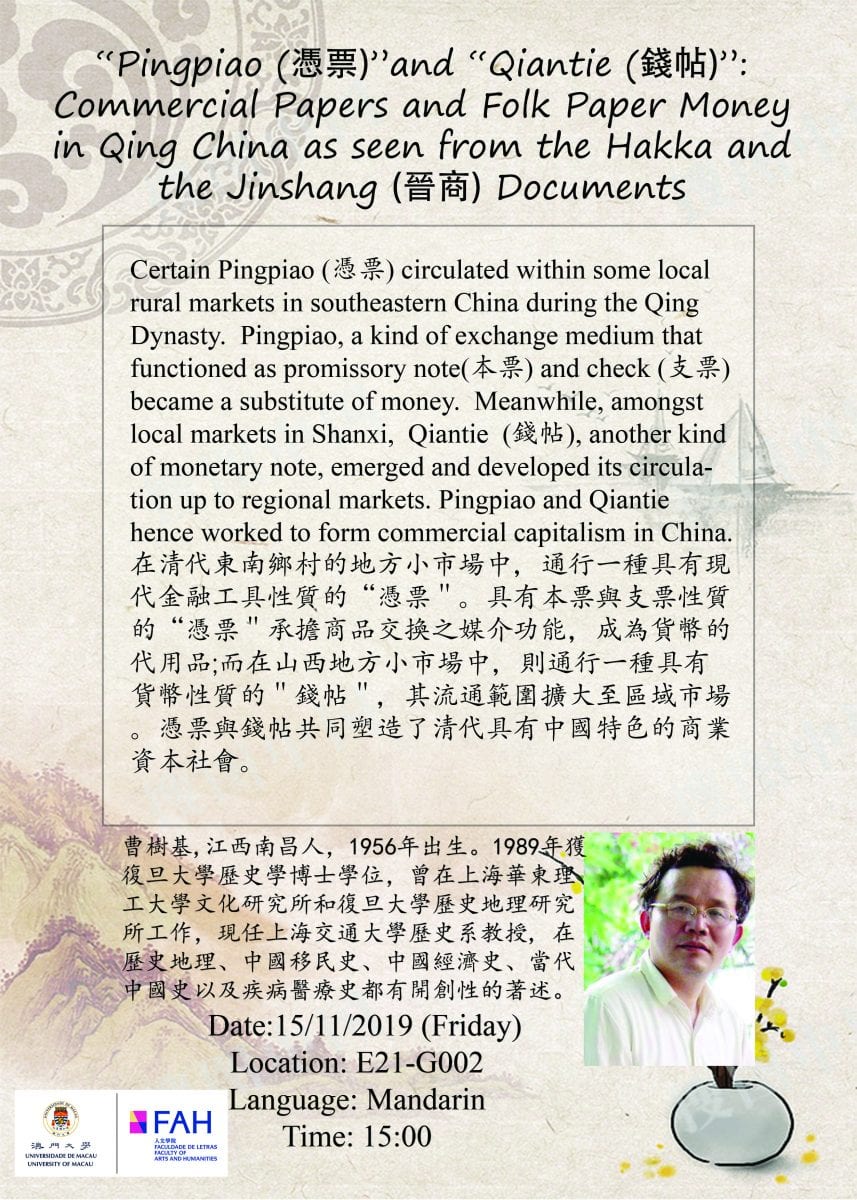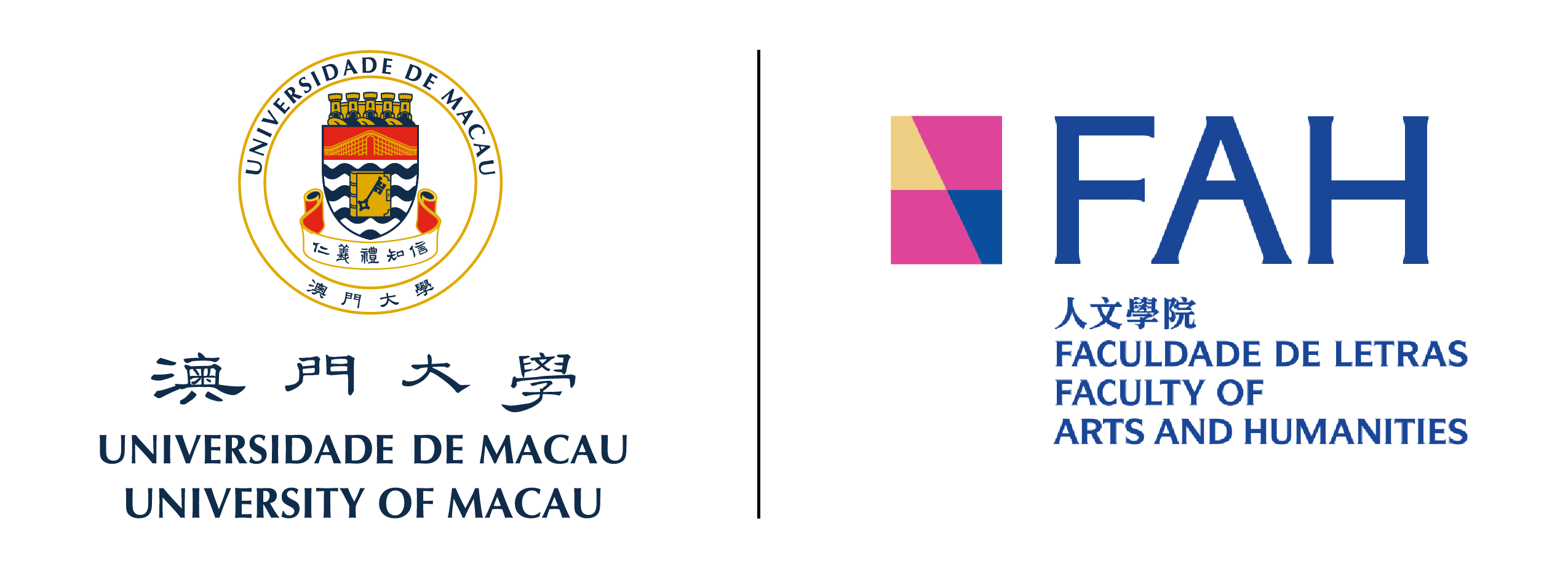

FAH-DHIST Guest Lecture – “Pingpiao 憑票”and “Qiantie 錢帖”: Commercial Papers and Folk Paper Money in Qing China as seen from the Hakka and the Jinshang (晉商) Documents
2019-11-15 @ 3:00 pm
“Pingpiao 憑票”and “Qiantie 錢帖”: Commercial Papers and Folk Paper Money in Qing China as seen from the Hakka and the Jinshang (晉商) Documents
Certain Pingpiao (憑票) circulated within some local rural markets in southeastern China during the Qing Dynasty. Pingpiao, a kind of exchange medium that functioned as promissory note(本 票) and check (支票) became a substitute of money. Meanwhile, amongst local markets in Shanxi, Qiantie (錢帖), another kind of monetary note, emerged and developed its circulation up to regional markets. Pingpiao and Qiantie hence worked to form commercial-capitalism in China.
憑票與錢帖:清代中國的商業票據與民間紙幣——以客家文書與晉商文書為例
在清代東南鄉村的地方小市場中,通行一種具有現代金融工具性質的“憑票"。具有本票與支票性質的“憑票"承擔商品交換之媒介功能,成為貨幣的代用品;而在山西地方小市場中,則通行一種具有貨幣性質的"錢帖",其流通範圍擴大至區域市場。憑票與錢帖共同塑造了清代具有中國特色的商業資本社會。

